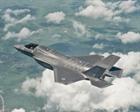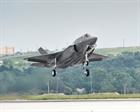Government reverses decision on F-35 jets for Carriers
On 10 May 2012 the Government announced it is reversing the decision to put F-35C on the new carriers. The ships wil now carry the F-35B STOVL version. Copyright prevents reproduction but here is some comment from newspapers.
Financial Times. (need to register -free)
The Naval staffs have done everything in their power to present ALL the pros and cons of the two variants of the F-35 to the Government. The Fleet Air Arm has always been pragmatic and worked with whatever resources it has. It WILL make Carrier Strike work.
With the current gap in capability, delivering carrier strike safely and as early as possible is now the main priority for the Navy and the Fleet Air Arm. Everyone is entitled to opinion and to voice it, but WE NEED CARRIER STRIKE. The Navy needs the Naval community to trust the Fleet Air Arm and support the efforts to revive this important capability. Detracting from that, will detract from their efforts.
The Government Press release is below.
In the face of unacceptable cost growth and project delays, the Government has today announced its decision to deliver Carrier Strike capability using a different type of Joint Strike Fighter (JSF) jet.
The MoD will move away from the Carrier Variant (CV) JSF and our Armed Forces will instead operate the short take-off and vertical landing (STOVL) variant JSF.
Defence Secretary Philip Hammond explained to the House of Commons that this decision had to be made now because:
Sticking with the Carrier Variant would delay Carrier Strike by at least three years to 2023 at the earliest;
The cost of fitting catapults and arrestor gear (‘cats and traps’) to the Queen Elizabeth Class Carrier to operate CV aircraft has doubled from around £1BN to £2BN; and
The STOVL aircraft offers theUK the ability to have an aircraft carrier available continuously. Although no decision on budgeting for crew and support costs will be taken until the next Strategic Defence and Security Review (SDSR) in 2015, the second carrier would be able to provide capability while the first vessel is in maintenance.
The STOVL aircraft has made significant progress since the SDSR was published over 18 months ago. The US Marine Corps has conducted successful STOVL flights from their ships; the UK will receive our first STOVL aircraft this summer; the Queen Elizabeth is due to arrive for sea trials in early 2017 and we now plan to start our STOVL flight trials off the HMS Queen Elizabeth carrier from 2018.
TheUKwill also benefit from full interoperability with the US Marine Corps and the Italian Navy – both of which operate the STOVL aircraft.
Defence Secretary Philip Hammond said:
“The 2010 SDSR decision on carriers was right at the time, but the facts have changed and therefore so too must our approach. This Government will not blindly pursue projects and ignore cost growth and delays. Carrier Strike with ‘cats and traps’ using the Carrier Variant jet no longer represents the best way of delivering carrier strike and I am not prepared to tolerate a three year further delay to reintroducing our Carrier Strike capability. This announcement means we remain on course to deliver Carrier Strike in 2020 as a key part of our Future Force 2020.”
Chief of the Defence Staff, General Sir David Richards, said:
“Our Armed Forces have a successful history of operating short take-off and vertical landing aircraft and our pilots are already flying trials in this variant of the Joint Strike Fighter alongside ourUSallies. These stealth aircraft will be the most advanced fast jets our Armed Forces have ever operated and I know they will do so with the greatest skill and professionalism.”


